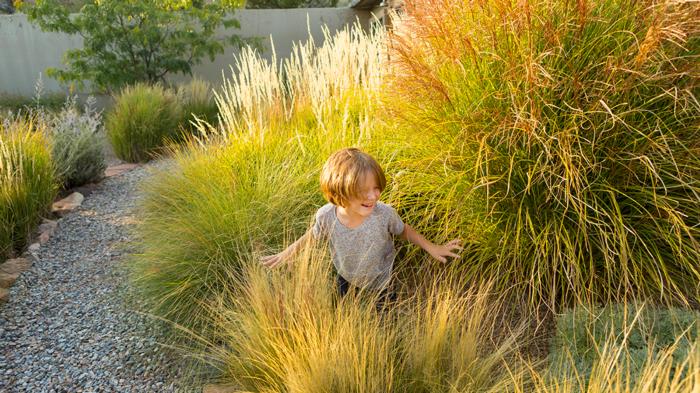Caring for Ornamental Grasses

Cool season grasses
These are evergreen grasses that look good all year.
Water
Provide water during periods of drought; if not watered during these times, they tend to go dormant which results in brown foliage.
Feed
Don’t add fertilizer; will become floppy if too much is added.
Prune
Provide rejuvenation pruning every two or three years. Use pruning shears or hedge trimmers to remove no more than two-thirds of the plant. Cutting back too much might allow moisture to gather on the crown, which causes rot.
Divide
May require more frequent division to stay attractive. If not divided, they tend to die out in the center.
Clean
Comb after the growing season to discard any brown foliage that piles up inside these plants. Use rubber gloves (dishwashing gloves work great). Run your fingers through the grass like you are combing hair. The brown blades cling to the gloves and come out easily. You may not remove all the spent foliage, but what you do remove will trigger the plant to refresh itself.
Warm season grasses
These grasses go dormant in the fall.
Prune
Prune after they turn brown in late fall or in early spring before new growth starts to appear. If you leave them through the winter, they provide seed for birds to feed upon. In areas of high fire danger, prune them after they go brown.
• Use pruners or hedging shears to cut the grasses down to a height of 3 inches if the grass stays under 3 feet tall.
• Trim to a height of 6 inches for varieties that grow above 3 feet tall.
• If pruning in spring, prune before the new growth starts to avoid cutting new fresh growth tips.
• Big grasses make a big mess and they have sharp leaves. Wear long sleeves and gloves when pruning.
• Wrap a rope, bungee cord or even masking tape around the outside of the grass to form a tight bundle. This will not only help with cleanup, but will also make the job of pruning easier.
• Use hedging shears to cut grass to a height of 10 inches.
Divide
Dig them up every few years and divide them. This rejuvenates the plant. It is easy with smaller grasses like blue fescue (Festuca glauca), but it's a big job on larger grasses.
